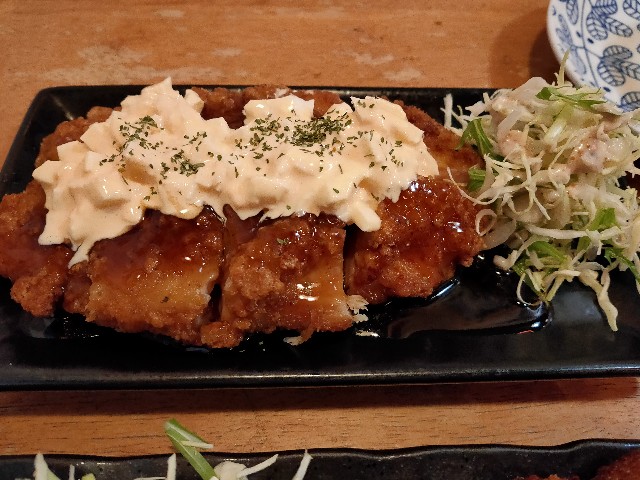Chicken Nanban can be considered a derivative of the Spanish dish Escabeche, which was introduced to Japan in the 16th century by the Nanban people (mainly Portuguese and Spanish). Escabeche is a dish where fish or meat is fried and then pickled in vinegar. In Spain, various types of Escabeche exist, using chicken, pork, or rabbit meat. In Japan, it was called Nanban pickles. While Nanban pickles using fish like horse mackerel were commonly made, Chicken Nanban was a version made using chicken.
From this perspective, it's possible that dishes similar to Chicken Nanban were made in various places in Japan. Regardless, Chicken Nanban is now very popular in Miyazaki Prefecture. The following two restaurants, both located in Miyazaki Prefecture, are famous as the originators of Chicken Nanban: 'Naoya's Dining', which serves it without tartar sauce, and 'Ogura', which invented a version of Chicken Nanban using only chicken breast and tartar sauce.
Chicken Nanban is made by coating chicken in batter and frying it in oil, then soaking it in sweet vinegar. The sweet vinegar, which typically contains soy sauce, vinegar, and sugar, is characterized by its relatively strong flavor. As mentioned earlier, tartar sauce is not an essential element of Chicken Nanban, as evidenced by its absence at 'Naoya's Dining'. However, Chicken Nanban is often served with tartar sauce. Tartar sauce, a mixture of mayonnaise and chopped onions or pickles, plays a crucial role in enhancing the flavor of Chicken Nanban.
Chicken Nanban is a perfect balance of chicken, batter, sweet vinegar, and tartar sauce. In particular, the umami of the chicken, the sweet and sour taste of the sweet vinegar, and the acidity of the tartar sauce harmonize beautifully. If you haven't tried it yet, I highly recommend it.
It was very delicious.
